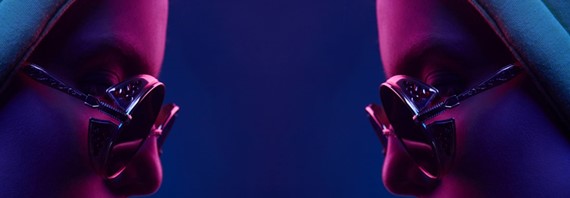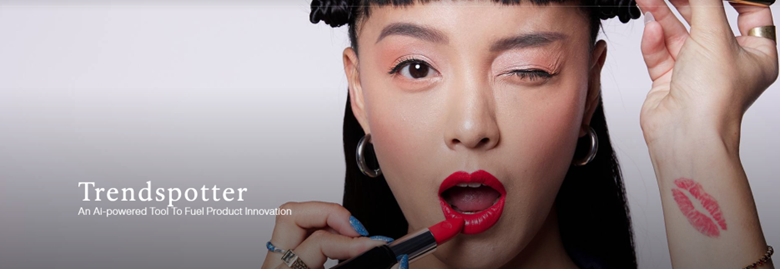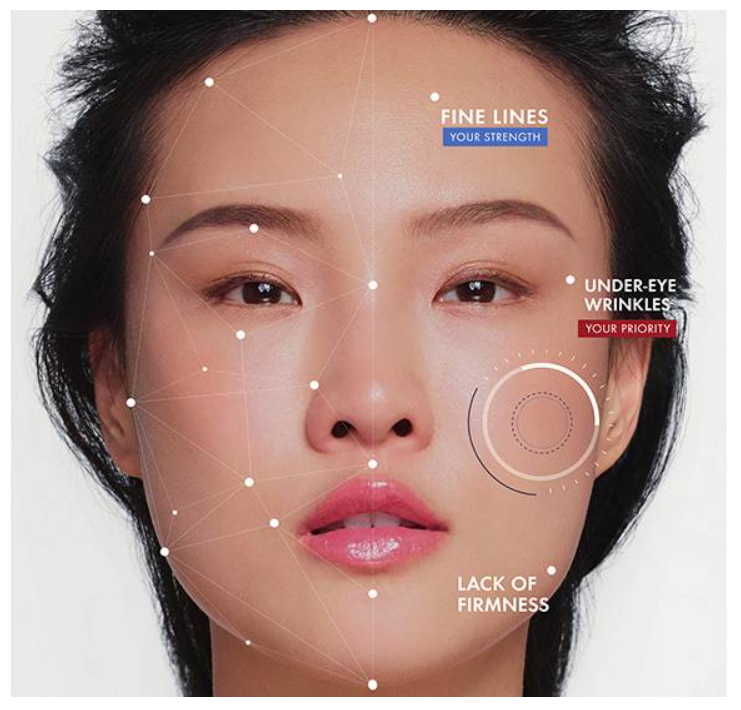#BeautyTech: L’Oréal leading the way

L’Oréal is successfully integrating AI, a challenging feat for a large incumbent outside of the tech industry
During my time as a strategy consultant, I heard the term AI used as a buzzword, the next frontier of business. I worked with executives at big incumbents who knew they had to start integrating AI and machine learning into their business operations. But knowing and doing are two very different things, and I’ve recognized a pattern in that big firms outside of the tech industry often struggle to understand how AI can be used to improve their business, compete better, and expand their market.
L’Oréal is an interesting example of a company that has taken real steps to do just that, so much so that it was featured in the podcast Me, Myself and AI, which highlights AI successes to understand why only 10% of companies succeed with AI.
The podcast episode is an interview with Stephane Lannuzel who serves as L’Oréal’s Beauty Tech Program Director. Based on this interview and other research, my understanding is that L’Oréal uses AI to create (and capture) value in three key ways: (1) To improve its existing business operations; (2) To expand its portfolio into service offerings; and (3) To instill a tech-savvy culture within the business.
IMPROVING EXISTING BUSINESS OPERATIONS
L’Oréal is improving its existing operations by integrating AI into the product development cycle and marketing. It has developed algorithms to retool its research and development processes such that it is faster and more efficient. In the same vein as how Moderna uses algorithms to identify protein sequences, L’Oréal is using algorithms to predict the performance of ingredients when doing product formulation. This creates value by speeding up the time to market for new products and by improving the quality and efficacy of the product for their customers. This has presented challenges via resistance to change among R&D employees who prefer the old way of doing R&D or are worried about losing their jobs. This is a common challenge when implementing AI and requires education of employees (which is addressed more later in this post).
Second, they have developed an internal tool called TrendSpotter, which detects new beauty trends early across academia, research, and social media. This could include new trending ingredients or new application trends. These insights can feed into the product development cycle to get new products to market which capitalize on these trends. The tool creates value because it is very important to identify trends early since the product development cycle can take up to 12-18 months. The TrendSpotter also helps improve marketing efficacy because L’Oréal can leverage its existing product portfolio to target new trends and even be early participants of trends. I would imagine that identifying ingredient trends early would also be a procurement advantage as the company can purchase inputs at lower prices before the trend explodes.

Third, L’Oréal is using machine learning to better understand its customers’ satisfaction with their products. They mine ratings and reviews and apply natural language processing to get a sense of the areas in which they can improve. For example, certain products leak for many customers, they can pinpoint the problem as a packaging issue as the products all share the same packaging.
EXPANDING INTO SERVICE OFFERING
While L’Oréal has historically been a consumer goods company, they are using AI to develop a services portfolio. This currently consists of two services. The first is a virtual try-on service which allows you to try products on using computer vision and augmented reality. I haven’t tried this service, but I am skeptical of its usefulness. Similar technologies that I’ve tried have not worked well for me. A big reason why is that color matching using computers is difficult as coloration is not always accurately depicted using computers. I suspect that this would be a big challenge for virtual try-ons as the purpose is to see what looks good on you.

The second service is a skin diagnostic tool which seeks to increase personalization by suggesting products that work well for the customer’s skin type and problems. They have also announced a product called Perso, which is an at-home tool to assist with this service. This is an interesting concept from L’Oréal because it has such a wide portfolio of brands and products. My hope is that these tools will also promote inclusivity, which is a big issue in the beauty industry. By gathering data on more skin types, colors, etc., hopefully they will better serve a wider array of customers.

INSTILLING A TECH-SAVVY CULTURE
One of the challenges of implementing AI into a big traditional incumbent is that the existing workforce is not skilled or educated about the benefits and implementation of AI. This creates a cultural problem of resistance, but also means that it is harder to spread knowledge and know-how for how to leverage opportunities for AI implementation. L’Oréal is addressing this by developing a tech and data university for employees which spans both technical and managerial curricula. Offering opportunities to upskill serves several purposes. First, it signals to employees the importance of tech and AI in the company’s strategy and future vision. Second, it indicates a desire to invest in employees and bring them along in this vision. This is important for counteracting resistance and driving a cultural change within the organization. Finally, it democratizes AI knowledge within the organization which facilitates that decentralization of the integration process and gives license to individual teams to help drive creative AI-based solutions.
Overall, I’m bullish on L’Oréal’s ability to continue building AI into its business activities to create and capture value. I think they should focus on deepening use of AI for back-end activities more so than for the consumer-facing areas, as the technology is not where it needs to be and there’s a lot of competition in these areas. One other area they need to be cognizant of and actively work to prevent, is bias. Inclusivity is already a hot button topic in beauty and AI has the capacity to exacerbate this. This should be a key priority for L’Oréal.



Super interesting post! I never would have imagined a makeup company deriving value from AI but seems they’re keen on pushing the frontier. I think its very interesting with regards to virtual try-on app or the product recommender as you rightly point out the issues on inclusivity with algorithms and the outsized impact this could have when recommending something such as makeup. It will be interesting to see how they continue to integrate AI into the organization but it looks like they’re taking the right steps by adequately training their personnel. It will also be interesting to see if other makeup incumbents follow in L’Oreal’s footsteps by rolling out AI into their own operations to improve their operations and compete with similar services to reach customers if L’Oreal’s rollout gains traction.
The virtual try-on service which you described made me immediately think of the Snapchat filters. These filters are playful AR experiences that transform you or the world around you. Filters can be creative effects such as for example beards, hats or new hair you can add to your face. I feel like this is similar to the virtual try-on service of L’Oreal but probably less advanced when it comes to details. I am convinced that such virtual try-ons will be extremely popular in the future, especially when it comes to clothes. However, I could well imagine that in the future it will be a winner takes most / all market as the best solution will probably be implemented by many or most of the customers. As you described in your post, the color matching using computers is pretty difficult as coloration is not always accurately depicted using computers. I think solving this problem requires an enormous amount of resources and specialists that L’Oreal may not have at its disposal. Therefore, I agree with you that it might be better for L’Oreal to outsource this service in the future and focus on its core business.
Oh wow, this is such an interesting application for AI. I wonder if L’Oreal also applies some of their AI tools to optimize their manufacturing and supply chain? It’s also super interesting that they scrape social media to detect emerging trends. Thanks for sharing!
Thanks for the post, Nitya — I had no clue L’Oreal was using AI so extensively! Especially loved the idea of TrendSpotter — prediction technology can be applied so easily to the beauty industry because product development is typically driven by fad ingredients (e.g. companies release a new version of a popular product changing nothing except incorporating an fad ingredient that is in the spotlight at the specific time). It’s also super interesting how beauty trends catch on between Eastern and Western cultures; the lag time for a beauty trend to catch on from one side of the world to another is typically 5-10 years — being able to predict this through AI ahead of competition (given lenghty product development times) would lead to significant advantages for L’Oreal!